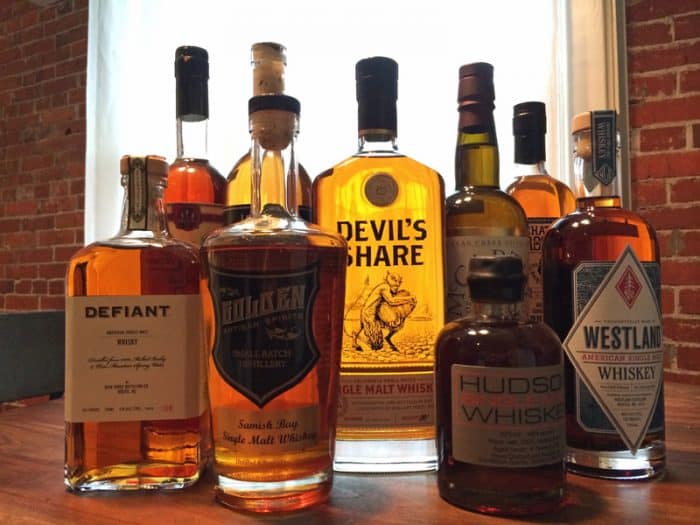The past 10 years have brought about a whiskey renaissance of sorts. Now, that’s not to say that whiskey ever really disappeared, but the influx of craft distilleries has yielded a major uptick in the number of brands and products being released into the marketplace. This can be attributed to the fact that the number of distillers labeling their product as “craft” grew by over 15% last year, with those numbers showing no major indication of slowing down. This sort of booming growth over the past number of years has brought the sales of craft spirits up to a whopping 7.2 million cases in 2017. Now, that may sound like a lot of liquor to some, but in reality, that volume only makes up about 3.2% of the total US spirits market. So who captures the other roughly 97%?
Most of you can already guess. Whiskey giants like Diageo, Sazerac, Beam-Suntory and Brown-Forman show relatively consistent numbers with their powerhouse labels, such as Jack Daniels, Jim Beam, Fireball and Crown Royal. Jack’s flagship whiskey, for example, can account for over 5 million cases per year alone in the US. These household names have a strong hold on the major market share, while craft distillers fight to capture a small portion of what’s left. With this in mind, the question might be asked: “Why is it so difficult to compete?”

Well, first off, the barrier to entry for a craft distiller is high. In my experience, the cost to quickly get a brand off the ground can be hundreds of thousand of dollars, not including facility design and infrastructure for those who want a brick-and-mortar site. So how are craft brands surviving? In order to avoid the huge wait times needed to age product, many brands source aged distillate from larger suppliers, such as MGP, who distills and ages huge batches of bourbon and rye out of Indiana, while their own products mature in the barrel. I’ve heard hundreds of people scoff at sourced whiskey, but the brands using it consistently win taste competitions, and craft distilleries have taken to finishing this distillate in special barrels or honing their skills as blenders to create complex, blended products with whiskies from a variety of sources.
Many purists tend to turn up their noses at this approach. I recently mentioned my work as a consulting whiskey blender to a man who ran a tasting club, and his response was “you BLEND your whiskey? When you watch Star Wars, do you also root for the Empire?” This is a prime example of how the narrative surrounding whiskey-making has become so convoluted that even some whiskey “experts” don’t realize the overlap in techniques between the big guys and craft distilleries, who both blend for consistency.
Although the price points on craft whiskies tends to be higher than big brands, and the ages a bit younger on average, they tend to promise a more unique experience, and have even taken to using more innovative techniques to create interesting tastes and aromas. Smaller barrels have been employed to speed up the extraction of the wood flavors, and the use of beer and wine barrels for secondary finishing – a trick that American whiskey makers have picked up from their counterparts in Scotland – has also become more prevalent in the craft scene.
The major distilleries have even started following the innovative approach of the craft guys, experimenting with new barrel types. Examples here include Jim Beam Distiller’s Masterpiece Sherry Cask and Angel’s Envy, which is finished in port barrels. As another article points out on this website, Buffalo Trace is even coming out with a whole line of whiskies aged in woods other than oak. However, it’s not all about taste. Plenty of great distilleries fail because they don’t know how to market their products. Advertising and branding play a huge role in the budding spirits market.
Craft brands offer a wide array of artistic, custom labels and bottles to make them stand out on the shelf, conveying a more premium quality. This is important, as the millennial generation doesn’t have the same kind of brand loyalty that their parents or grandparents did. Combine this with the fact that there has been a resurgence of value placed on “artisan” or “craft” products across a wide variety of consumer categories, and you’ve created the perfect storm for craft distillers to break into the market. With both small and major distilleries taking pages from the playbook of the other, one thing’s certain: we’re in for an interesting next decade of whiskey.



